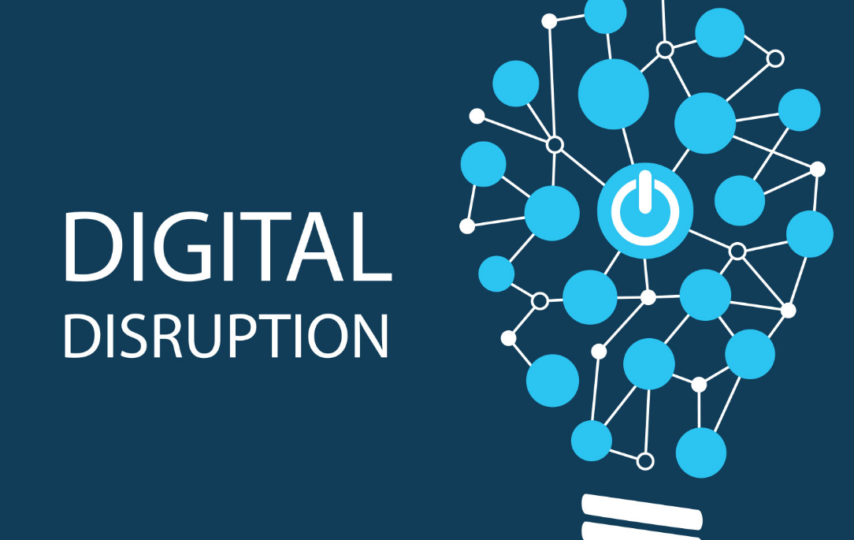In the blink of an eye, our world has been transformed by the rapid pace of technological advancements. What once seemed like science fiction is now an integral part of our daily lives. From self-driving cars to blockchain-powered transactions, the digital revolution is sweeping industries, redefining how we live, work, and play. In this blog, we delve into the fascinating realm of tech disruption and explore how emerging trends are reshaping industries in unprecedented ways.
Understanding Tech Disruption
Defining Tech Disruption and its Impact on Industries
Tech disruption is the radical transformation of industries and markets by introducing innovative technologies. It’s not just about incremental improvements; it’s about seismic shifts that challenge the status quo and open up new possibilities. This phenomenon has become increasingly significant as we witness entire sectors being reshaped by emerging technologies.
Historical Examples of Tech Disruption
We can look back at history to appreciate the gravity of tech disruption. The advent of the internet disrupted traditional media, while smartphones revolutionized communication and commerce. These shifts were not just about new gadgets; they fundamentally altered how we consume information and conduct business.
The Role of Innovation and Emerging Technologies
At the heart of tech disruption are innovation and emerging technologies. Companies that embrace these advancements can gain a competitive edge, while those that resist risk obsolescence. Innovation is no longer a luxury but a survival strategy in today’s rapidly evolving tech landscape.
Key Emerging Tech Trends
Trend 1: Artificial Intelligence (AI) and Machine Learning
AI, powered by machine learning, transforms industries from healthcare to finance. It can analyze vast datasets, make predictions, and automate complex tasks. In healthcare, AI assists with diagnosis and treatment decisions, while in finance, it optimizes investment portfolios.
Trend 2: Internet of Things (IoT)
The IoT connects everyday devices to the internet, enabling data collection and remote control. In agriculture, IoT sensors monitor soil conditions, while in logistics, they ensure real-time shipment tracking, improving efficiency and customer experiences.
Trend 3: Blockchain Technology
Blockchain’s decentralized ledger technology ensures secure and transparent transactions. In finance, it’s revolutionizing payments and eliminating intermediaries, while in supply chain management, it enhances transparency and traceability.
Trend 4: 5G Connectivity
5G promises ultra-fast, low-latency communication, enabling innovations like remote surgery and autonomous vehicles. This technology can potentially transform healthcare, smart cities, and remote work.
Trend 5: Augmented and Virtual Reality (AR/VR)
AR and VR enhance user experiences and have applications beyond gaming. In healthcare, they aid in surgical simulations; in education, they provide immersive learning experiences.
Industries Undergoing Transformation
Healthcare
Telemedicine and remote patient monitoring have become commonplace, reducing the need for in-person visits. AI-driven diagnostics and personalized medicine are improving patient care and outcomes.
Finance and Banking
Digital payments and blockchain-based transactions are streamlining financial processes and increasing security. Automated trading and robo-advisors are changing the way we invest.
Manufacturing and Supply Chain
Smart factories are using IoT to optimize production, reducing costs and errors. Supply chain management benefits from real-time data, enhancing transparency and efficiency.
Retail and E-commerce
AI-driven customer recommendations personalize shopping experiences, increasing sales. Augmented reality transforms how we shop, allowing customers to try products virtually.
Transportation and Logistics
Autonomous vehicles are on the horizon, promising safer and more efficient transportation. Drone deliveries are becoming a reality, changing how goods are transported and delivered.
Challenges and Opportunities
The Challenges of Adopting Emerging Technologies
Adopting emerging technologies comes with its share of challenges. Implementation costs and technical hurdles can be significant, and data privacy and security concerns are ever-present.
Opportunities for Businesses and Entrepreneurs
However, there are ample opportunities for businesses and entrepreneurs willing to embrace tech disruption. They can gain a competitive edge in disrupted industries by creating innovative solutions and products.
Preparing for Tech Disruption
Staying Informed about Emerging Trends
Staying informed about emerging trends is crucial. Businesses must continuously monitor the tech landscape to identify opportunities and threats.
Investing in Research and Development
Investing in research and development is essential for staying ahead of the curve. Companies that allocate resources to innovation are better positioned to thrive in a disruptive environment.
Collaborating with Tech Partners and Startups
Collaborating with tech partners, IT support partners and startups can accelerate innovation. By tapping into external expertise, businesses can leverage emerging technologies more effectively.
Conclusion
In closing, the era of tech disruption is upon us, and it shows no signs of slowing down. Emerging tech trends like AI, IoT, blockchain, 5G, and AR/VR are reshaping industries at an unprecedented pace. Businesses that adapt and innovate stand to thrive, while those that resist change risk being left behind. The digital revolution is an ongoing evolution, and staying ahead of the curve is the key to success in this brave new world. Embrace the disruption and let innovation lead the way into a brighter future for all industries and sectors.








